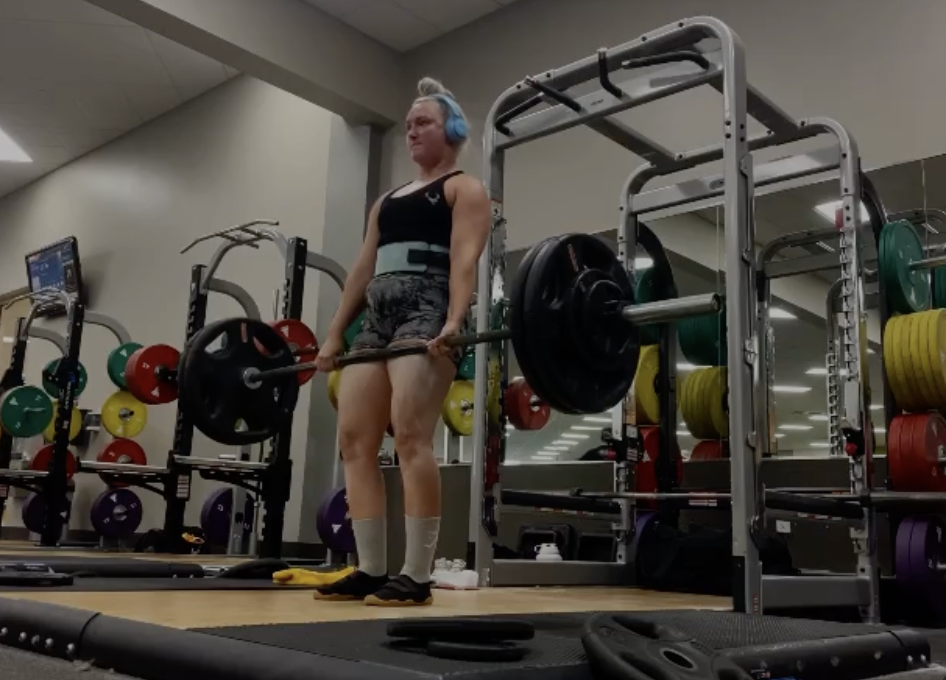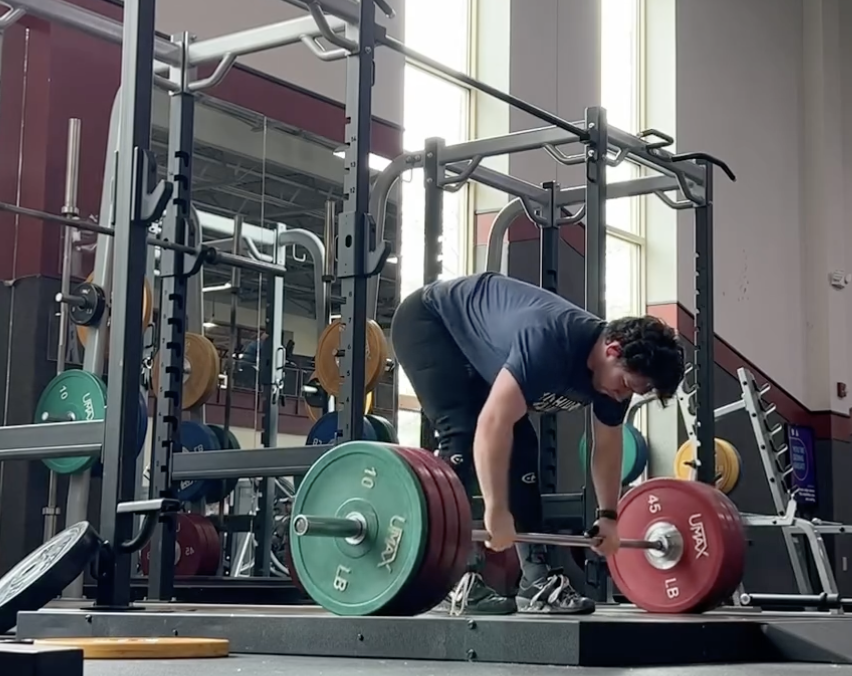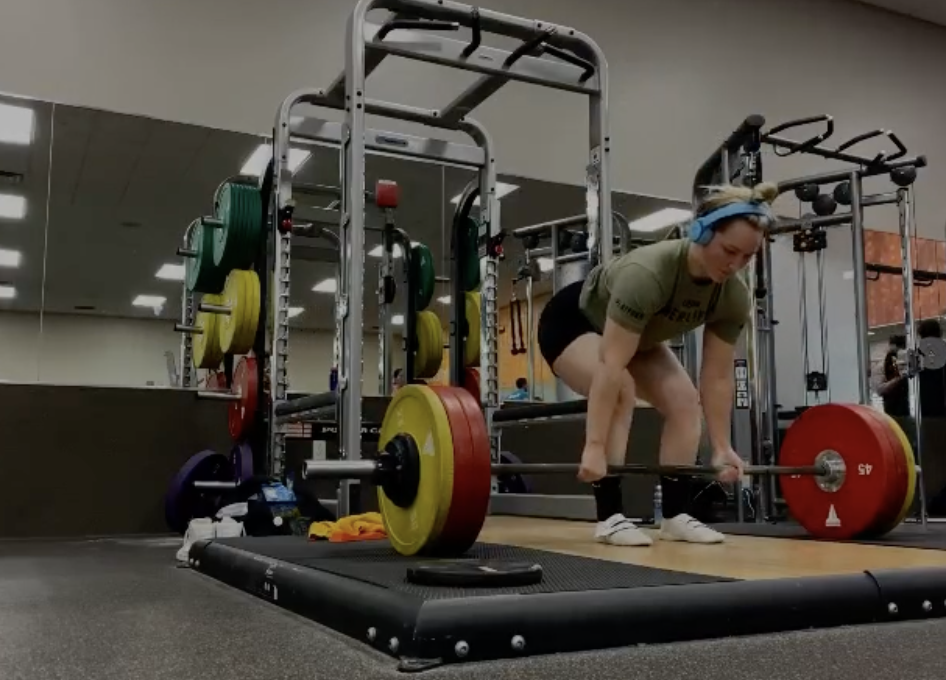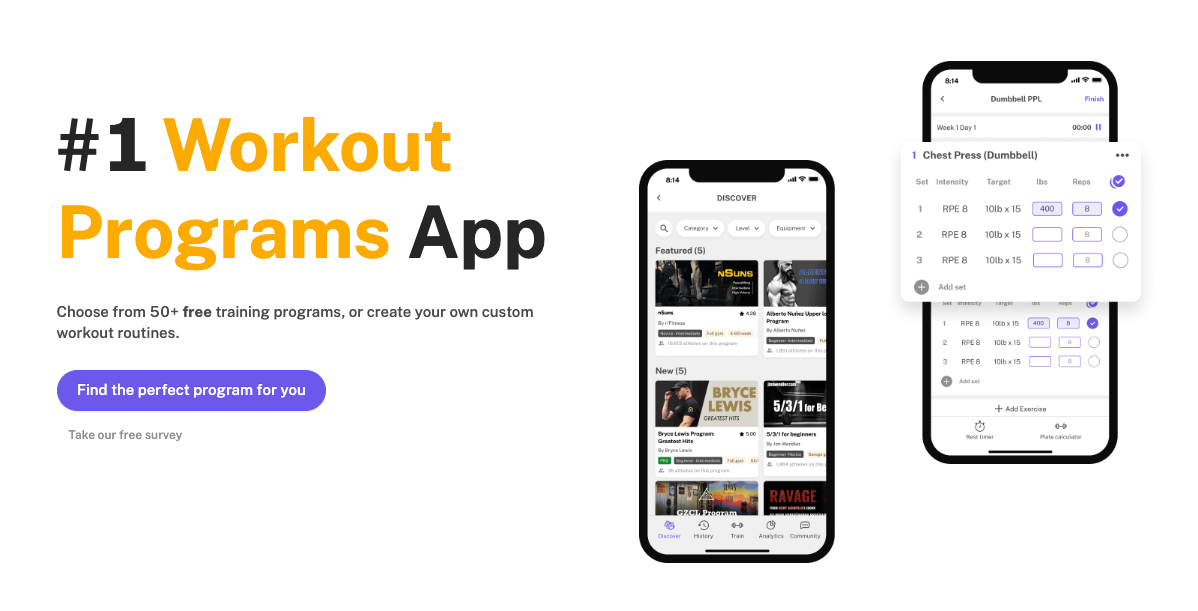How Often Should You Deadlift for the Best Results?
Written by the Boostcamp staff
Deadlift Frequency Guide: How Often Should You Deadlift?
Deadlifts are a favorite exercise among gym-goers for a good reason. They're an incredibly effective exercise for building strength, muscle mass, and improving overall body composition in several areas, such as the back and the legs. But, one question that many people are wondering about is how often should you deadlift to get the best results? The answer is not as simple as giving a specific number of days per week. It depends on your training goals, experience, and other factors unique to your physical capabilities. Let's take a look into understanding your how often your training program should call for deadlifts, and explore different types of deadlifts to enhance your training routine. We'll also discuss circumstances when you shouldn't increase deadlift frequency due to risks of overtraining and injuries. Lastly, we'll address common concerns about deadlift frequency and provide tips on integrating them into your training program.
Get ready to take your deadlifting game to the next level!
Understanding Your Deadlift Frequency

When it comes to deadlift frequency, it's important to align it with your training goals and experience level. Evaluating your training history can help determine the ideal frequency for deadlifts. Additionally, adjusting the frequency based on recovery time and muscle group focus is crucial. Consider your training program and volume when deciding how often you should incorporate deadlifts into your workouts. Keep in mind the training intensity and movement pattern as well, as these factors play a role in determining the optimal deadlift frequency for hitting your goals. By taking all these variables into account, you can tailor your deadlift frequency to suit your needs and maximize your results.
Defining Your Training Goals
When it comes to deadlifting, it's important to define your training goals upfront. Whether you're aiming for strength gains, muscle growth, or overall fitness, tailoring your deadlift frequency is key to achieving the results you want. Consider your training experience and history when setting the ideal frequency for deadlifts. Assess how much time you can commit to training sessions and take into account the advice of professionals who can help determine the best approach for you. By defining your training goals and understanding how they align with your deadlift frequency, you'll be able to create a workout plan that maximizes your progress and keeps you on track towards your objectives.
Evaluating Your Training Experience
Beginner lifters can benefit from a lower frequency of deadlifting to focus on their form and technique, ensuring they have a solid foundation. Intermediate lifters, on the other hand, can increase their deadlift frequency to challenge their strength gains and continue progressing. Advanced lifters may find that a higher deadlift frequency allows them to further improve their strength. When adjusting your deadlift frequency, it's important to consider factors such as your training history, work capacity, and recovery time. It's crucial to listen to your body as an experienced lifter and make adjustments accordingly. By evaluating your training experience and understanding your individual needs, you can determine the ideal frequency for your deadlift workouts.
The Different Types of Deadlifts to Enhance Routine
Incorporating different deadlift variations is a good idea to enhance your workout routine and target different muscle groups. One variation to consider is the Romanian deadlift, which focuses on the posterior chain, and it is often used on a leg day as it can help improve hip and hamstring strength. Another option is the trap bar deadlift, which challenges your grip strength and stimulates muscle growth. Of course, the conventional deadlift remains a primary focus for many lifters, as it is a great compound exercise that targets multiple muscle groups and builds overall strength. Additionally, tempo deadlifts can be incorporated to improve muscle control and movement patterns. By adding these different types of deadlifts to your training variable, you can prevent plateaus and keep your workouts engaging. Sports science suggests that incorporating heavier deadlift sessions into your week split can lead to better results.
The Effectiveness of The Deadlift
Now, many people say that the deadlift is pointless, but when it comes to building overall strength and muscle mass, the conventional deadlift is a highly effective exercise. This compound movement targets multiple muscle groups, making it a good idea to incorporate it into your workout routine. Proper form and technique are crucial to maximize your deadlift results. By doing so, you can improve muscle coordination and enhance your overall performance. Consider adjusting your deadlift frequency to focus on heavier sessions with higher intensity. This training variable can help you make progress in your exercise routine. Many lifters find that heavier deadlift sessions, incorporated into a split training week, become their primary focus.
Circumstances When You Shouldn't Increase Deadlift Frequency

When it comes to deadlifting, there are certain circumstances where increasing your frequency may not be a good idea. First and foremost, if you're experiencing signs of overtraining or muscle fatigue, it's important to avoid pushing yourself too hard. It's crucial to listen to your body and deload or decrease your deadlift frequency if you consistently fail to recover properly. Injuries, especially those to the lower back, may require a reduction in deadlift frequency or even temporary cessation. If you have any pre-existing conditions or concerns about deadlift frequency, it's always a good idea to consult with a professional. Lastly, adequate rest and recovery are essential, particularly for recreational lifters, to prevent burnout.
Risks of Overtraining and Injuries
Pushing yourself too hard with deadlifts can have negative consequences on your strength gains and put you at a higher risk of injuries. It's essential to listen to your body and give it proper recovery time to prevent overtraining and support muscle growth. Overdoing deadlift frequency can potentially lead to muscle strains or tears, so it's crucial to find the ideal frequency that works for you. Particularly if you're newer to lifting, focus on perfecting your form and technique before incorporating progressive overload or gradually increasing the frequency of your deadlift sessions. It also can help to keep a weightlifting belt right in you gym bag for those heavy days, as belts help to brace the core muscles. Remember, taking care of your body and avoiding overtraining is a good idea for long-term success in your workout routine.
The Importance of Adequate Rest
Rest days are crucial for muscle recovery, growth, and strength gains. They allow your body to recover from intense workouts and reduce the risk of overuse injuries. Adequate rest also gives your central nervous system the time it needs to recover, leading to better results in your deadlift training. It's a good idea to incorporate active recovery activities like light cardio or mobility work on your rest days to further enhance the recovery process. Balancing your training frequency with enough rest is essential for optimal deadlift results. By prioritizing rest, you can maximize the benefits of your workout plan and ensure long-term progress.
The Role of Nutrition in Performance
Proper nutrition plays a crucial role in enhancing your performance during deadlifts and other workouts. A balanced diet is essential to support optimal performance, providing your body with the necessary nutrients it needs to excel. Hydration is also key for muscle recovery and strength gains, so make sure you drink enough fluids throughout your workout sessions. Additionally, adequate protein intake is crucial for muscle growth and repair, while foods rich in carbohydrates provide the energy needed for intense deadlift sessions. Finally, don't forget the importance of essential vitamins and minerals in supporting overall health and exercise performance.
Integrating Deadlifts into Your Training Program

Integrating deadlifts into your training program is a good idea if you want to work multiple muscle groups and see optimal results. Begin by starting with lighter weights and focusing on good form to avoid injuries and promote proper technique. As you progress, gradually increase the volume and intensity of your deadlift sessions for better gains. Incorporate deadlifts into your routine 1-2 times per week, considering different variations to target specific muscles. This training variable ensures that you're not overtraining and allows for adequate rest and recovery. By following these guidelines, you can effectively integrate deadlifts into your exercise routine and achieve the best possible outcomes.
Deadlifting Once per Week: What You Need to Know
Deadlifting once per week can be a good idea, especially for beginner lifters or those with limited time. It allows you to focus on higher intensity and volume during your weekly deadlift session, maximizing the benefits. However, it's important to remember that deadlifts are a demanding exercise that puts a lot of stress on your body. Adequate recovery time is crucial to prevent injuries, so make sure to allow for enough rest between deadlift sessions. To enhance your workout plan, consider supplementing deadlift training with other compound movements to work different muscle groups. Adjust the intensity, volume, and variation based on your individual goals and training experience.
Deadlifting Twice per Week: A Practical Approach
Deadlifting twice per week is a good idea for intermediate lifters looking for optimal results. To maximize the benefits, it's ideal to split the deadlift sessions and focus on strength and volume separately. This allows you to give each aspect of the exercise the attention it needs in your workout plan. Adequate recovery time between sessions is crucial for muscle recovery and growth. In order to prevent plateaus and improve strength gains, vary the intensity, volume, and variation of your deadlifts. It's important to listen to your body and adjust the training frequency based on your personal recovery and performance. By following this approach, you can make the most out of your deadlift training.
Deadlifting Three times per Week: Advantages and Precautions
Deadlifting three times a week can be a good idea for advanced lifters with good recovery capacity. It allows for an ideal frequency to stimulate muscle growth and strength gains. By implementing a split routine, you can focus on different muscle groups during each deadlift session, making the most out of your workout plan. However, it is important to monitor your training variables such as volume and intensity to avoid overtraining and minimize the risk of injury. Incorporating proper warm-up, good mobility exercises, and recovery strategies is crucial to support the demands of higher frequency deadlift training. Consulting with a strength training professional, like Jake Boly, can help create a training program with the primary focus on maximizing your results while minimizing potential risks.
Addressing Common Concerns about Deadlift Frequency
It's important to address common concerns about deadlift frequency to optimize your training program. While some lifters may find better results with a higher deadlift frequency, it's essential to consider individual goals, recovery time, and training history. Beginners can benefit from a lower deadlift frequency to focus on technique and strength development. On the other hand, advanced lifters can handle a higher deadlift frequency but must prioritize recovery and ensure adequate training volume. It's crucial to experiment with different deadlift training frequencies to find what works best for you. Remember that finding the ideal frequency is a good idea for optimal progress in your workout plan.
Is Deadlifting Three Times a Week Too Much?
Deadlifting three times a week may not be suitable for beginners or recreational lifters. It's important to consider individual training capacity, work capacity, and recovery time when determining deadlift frequency. Focus on compound movements and adjust intensity, volume, and frequency as needed. Seek guidance from experienced lifters or professionals.
Finding Good Workout Routines
When finding the right deadlift frequency, utilizing a good workout program to use alongside it is key. Good workout programs will help with your fitness journey, you would want to find a program that caters to your needs and guides you in the right direction, making sure that you are making the most gains. If you are looking to stay on track and continue progressing, then finding a good workout program is the key. Where do you look for a good workout program? Check out the Boostcamp App for some great programs.
Boostcamp is home to over 50 FREE workout programs that consist of strength, hypertrophy, or functional fitness, or both, from the push pull legs program all the way to upper lower, there are so many programs to choose from that can help fit your needs. However, with Boostcamp, you don’t have to just follow a pre-written program (although each program is written by a professional), you also can create your own program as well, and track your progress to make sure you are on the right track. That being said, when you are looking to incorporate some serious training to further your progress, then check out Boostcamp.
Conclusion
To maximize your deadlift results, it is essential to consider factors such as your training goals and experience level. The frequency of your deadlift workouts should align with these factors and be adjusted accordingly. It's also important to explore different types of deadlifts, such as the Romanian deadlift, trap bar deadlift, and conventional deadlift, to enhance your routine and target different muscle groups.
However, it's crucial to recognize circumstances when increasing deadlift frequency may not be beneficial. Overtraining and injuries can occur if you don't allow your body enough rest and recovery time. Additionally, proper nutrition plays a significant role in supporting your performance and recovery. Integrating deadlifts into your training program can be done with various frequencies, such as once per week, twice per week, or thrice per week. Each approach has its advantages and precautions that should be considered based on your individual needs and abilities.
Ultimately, finding the right deadlift frequency depends on listening to your body, understanding your limits, and progressively challenging yourself. Consult with a fitness professional for personalized guidance and support on your deadlifting journey.
Let us know! And be sure to follow Boostcamp on Instagram and subscribe on YouTube!

Images courtesy of Instagram (chloelikestolift)

